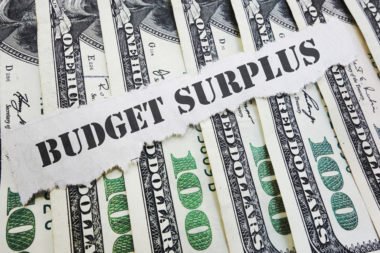Current assets are the assets a business holds that can be easily converted into cash. When you’re determining the value of your business, your current net worth, or how much company cash you have access to, you’ll need to be able to accurately calculate your current assets. Knowing your current assets and how much debt your business is in can also help you determine if you have a healthy debt to asset ratio or if you need to work on your business’s financial plan.
When you have a firm grasp on your assets, liabilities, debts, and equities, it’s easier to understand where your business stands and how much it’s currently worth. The total value of current assets your business holds is crucial because it indicates how much you can afford to pay for daily operating costs and other expenses.
Table of Contents
Current Assets Definition
Current assets are defined as the belongings, valuables, or resources that your company can easily convert into cash within one year. If your company’s operating cycle is longer than one year, your current assets are defined as anything that is expected to convert into cash within the timeframe of one operating cycle.
It’s important to have a consistent understanding of your business’s current assets and what they’re worth. These assets are what you can use to pay for operating expenses or convert to cash if you need a lump sum to pay for an unexpected bill. Your current assets also help determine the value of your business.
Current Assets Characteristics
Since current assets can be easily converted into cash, they’re considered liquid assets. When you’re attempting to calculate your business’s current assets, it’s important that you can specifically identify which assets are current and which should not be included in the total. Even if a resource will eventually earn your business money, it can’t be included in your current assets total if it won’t be converted to cash within the year.
There are a few characteristics of current assets you can use to identify which ones to add up. You can easily identify current assets because they’re assets that:
- Are considered liquid.
- Can be converted to cash within one year or within one business operating cycle.
- Are easily accessible to your company.
- Are associated with specific values in dollar amounts.
While specific current assets can differ from business to business, your current assets must possess these characteristics to be included in your calculation.
Current Assets Examples
Your company may have many different types of current assets you can include when calculating how much liquidity you can currently access. While each business is different, some of the most common types of current assets include the following:
- Cash: This includes the currency and petty cash your business has, as well as the money in your business banking accounts and some of your U.S. Treasury bills.
- Temporary investments: These should include any investments you have that aren’t long-term and can easily be converted into cash.
- Accounts receivable: This is the total unpaid invoices you currently have with your company’s clients that are expected to be paid within the year.
- Inventory: Your inventory includes any products you currently have that are ready to be sold and expected to be sold within a year.
- Supplies: These are the raw materials you have that are used to create your products or provide services to customers and that can be sold within the year.
- Prepaid expenses: These include the services, supplies, or products that you’ve already paid for but haven’t received yet, such as liability insurance if you’ve paid the premium for the entire year in advance.
Since all of these are liquid assets that can be converted into cash in a short period of time, they’re considered current assets.
Current Assets vs. Non-Current Assets
When calculating your current assets, you’ll also need to ensure you’re not including non-current assets with your calculations. Non-current assets are fixed assets, which means they’re long-term investments that aren’t meant to make you money or be converted into cash within the year.
Examples of fixed or non-current assets are your company’s building or certain pieces of equipment used in manufacturing. Non-current assets can also be intangible, such as patents. Additional examples include investments you’ve made in other companies or other long-term investments that won’t be sold within the year. Since these non-current assets can’t be converted into cash quickly and aren’t liquid, they aren’t counted as your company’s current assets.
How to Calculate Current Assets
To calculate your business’s total current assets, you must add up all the current assets in each category. The most important part of the equation is to determine the value of each type of asset accurately. It’s easier to determine value when you analyze each category separately.
First, add up how much cash and cash equivalents your business currently has. Then, add up the value of your current inventory, accounts receivable, and marketable securities. Finally, determine how much value your company has in prepaid expenses and any other liquid assets unique to your business.
When you add these figures together, you’ll know the total value of your current assets. This number allows you to determine how much you have to pay for operating expenses. By understanding your current assets and the total you currently have, you have a dollar amount that represents the goods, products, or resources that you expect to be sold, consumed, or utilized throughout the operating cycle.
Image Source: https://depositphotos.com/





